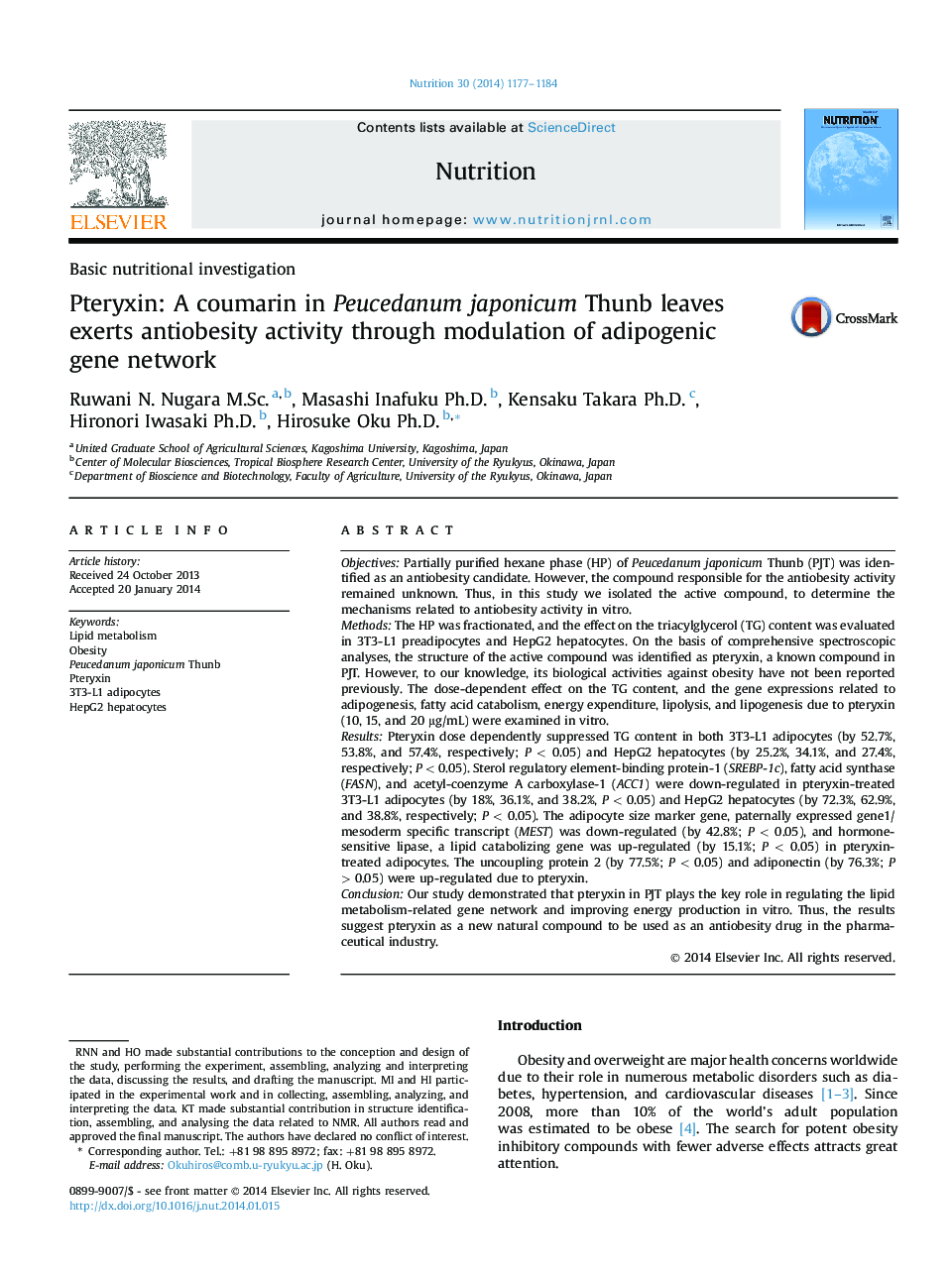| کد مقاله | کد نشریه | سال انتشار | مقاله انگلیسی | نسخه تمام متن |
|---|---|---|---|---|
| 6089698 | 1208549 | 2014 | 8 صفحه PDF | دانلود رایگان |

ObjectivesPartially purified hexane phase (HP) of Peucedanum japonicum Thunb (PJT) was identified as an antiobesity candidate. However, the compound responsible for the antiobesity activity remained unknown. Thus, in this study we isolated the active compound, to determine the mechanisms related to antiobesity activity in vitro.MethodsThe HP was fractionated, and the effect on the triacylglycerol (TG) content was evaluated in 3T3-L1 preadipocytes and HepG2 hepatocytes. On the basis of comprehensive spectroscopic analyses, the structure of the active compound was identified as pteryxin, a known compound in PJT. However, to our knowledge, its biological activities against obesity have not been reported previously. The dose-dependent effect on the TG content, and the gene expressions related to adipogenesis, fatty acid catabolism, energy expenditure, lipolysis, and lipogenesis due to pteryxin (10, 15, and 20 μg/mL) were examined in vitro.ResultsPteryxin dose dependently suppressed TG content in both 3T3-L1 adipocytes (by 52.7%, 53.8%, and 57.4%, respectively; P < 0.05) and HepG2 hepatocytes (by 25.2%, 34.1%, and 27.4%, respectively; P < 0.05). Sterol regulatory element-binding protein-1 (SREBP-1c), fatty acid synthase (FASN), and acetyl-coenzyme A carboxylase-1 (ACC1) were down-regulated in pteryxin-treated 3T3-L1 adipocytes (by 18%, 36.1%, and 38.2%, P < 0.05) and HepG2 hepatocytes (by 72.3%, 62.9%, and 38.8%, respectively; P < 0.05). The adipocyte size marker gene, paternally expressed gene1/mesoderm specific transcript (MEST) was down-regulated (by 42.8%; P < 0.05), and hormone-sensitive lipase, a lipid catabolizing gene was up-regulated (by 15.1%; P < 0.05) in pteryxin-treated adipocytes. The uncoupling protein 2 (by 77.5%; P < 0.05) and adiponectin (by 76.3%; P > 0.05) were up-regulated due to pteryxin.ConclusionOur study demonstrated that pteryxin in PJT plays the key role in regulating the lipid metabolism-related gene network and improving energy production in vitro. Thus, the results suggest pteryxin as a new natural compound to be used as an antiobesity drug in the pharmaceutical industry.
Journal: Nutrition - Volume 30, Issue 10, October 2014, Pages 1177-1184